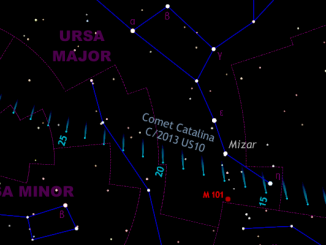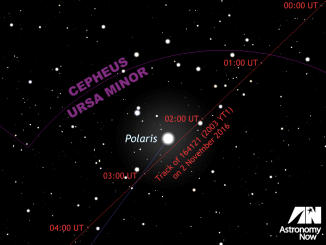
With around 8-hours worth of 5- and 10-minute subs taken with his Sky 90 array, Greg Parker managed to pick up a trace of the Integrated Flux Nebula around Polaris, the Pole Star, in Ursa Minor.

Having brushed by bright star Arcturus on 1 January, Comet Catalina (C/2013 US10) continues its trek through the constellations of the far north. Now a circumpolar object for the British Isles, in the early hours of 17 January it lies between famous double star Mizar (ζ Ursae Majoris) and the Pinwheel Galaxy (M101), virtually overhead in the UK.

At 9:24am GMT on 31 October 2016, near-Earth asteroid 164121 (2003 YT1) will safely fly by at a distance of 3.2 million miles (5.2 million kilometres), or 13.5 times the distance of the Moon. Furthermore, this 1.1-mile-(1.7-kilometre)-wide Apollo asteroid also passes very close to Polaris early on 2 November, creating a rare astrophotographic and observing opportunity.
© 2019 Pole Star Publications Limited
